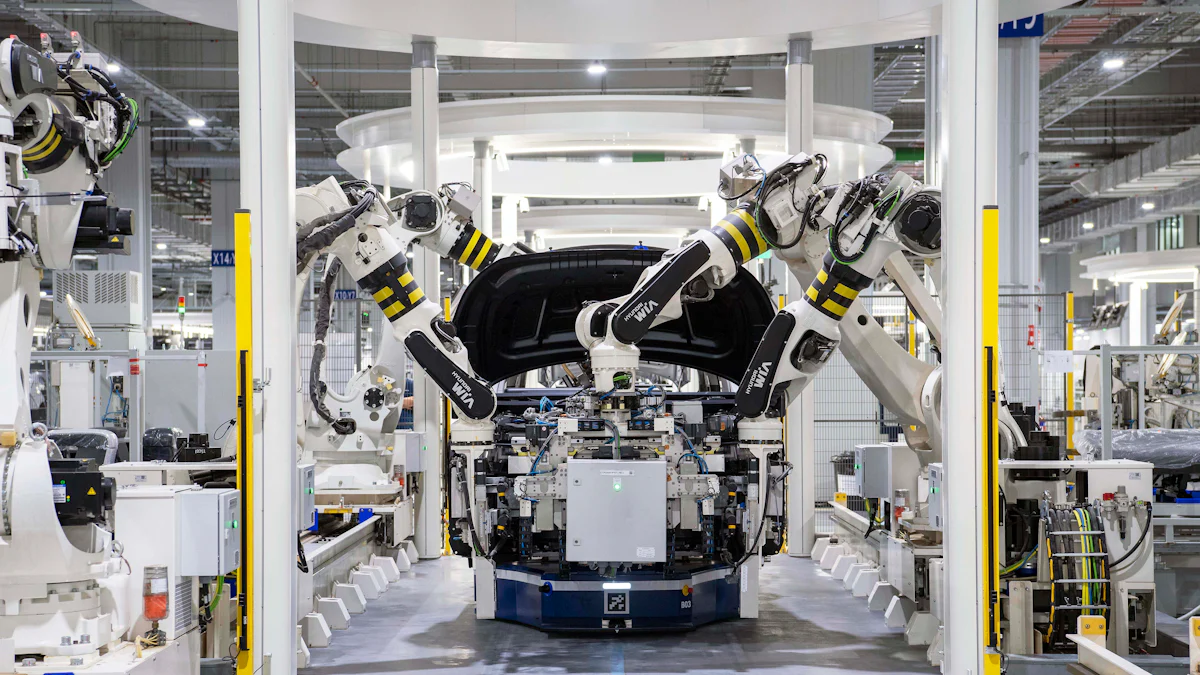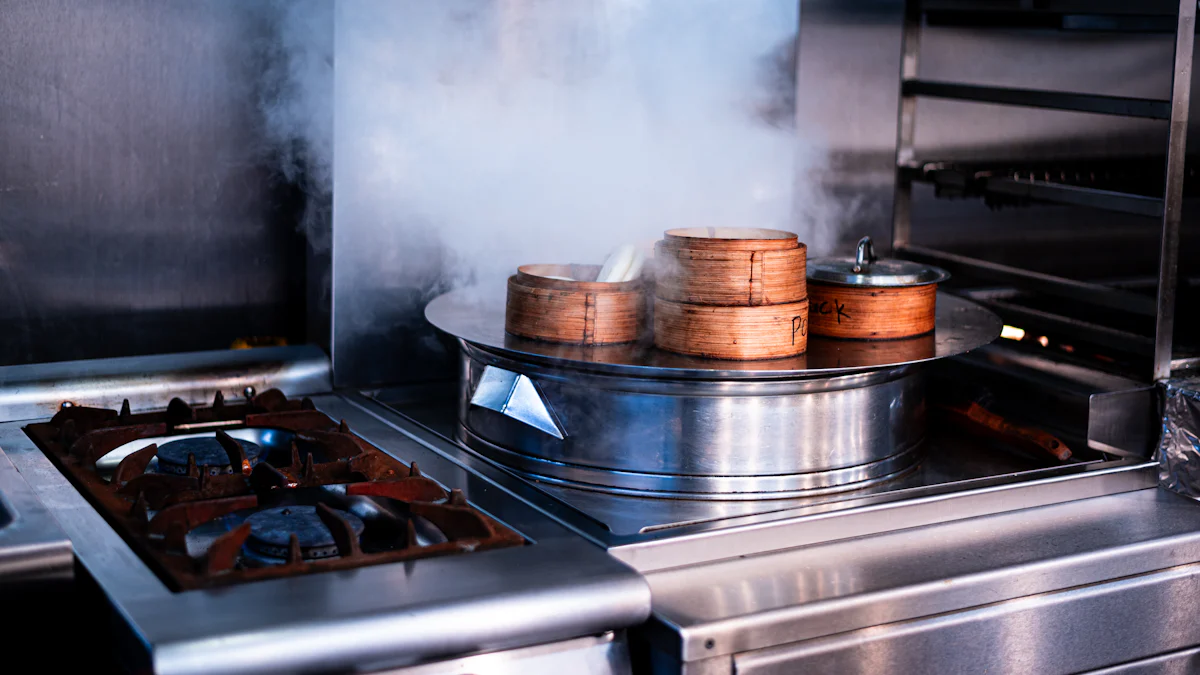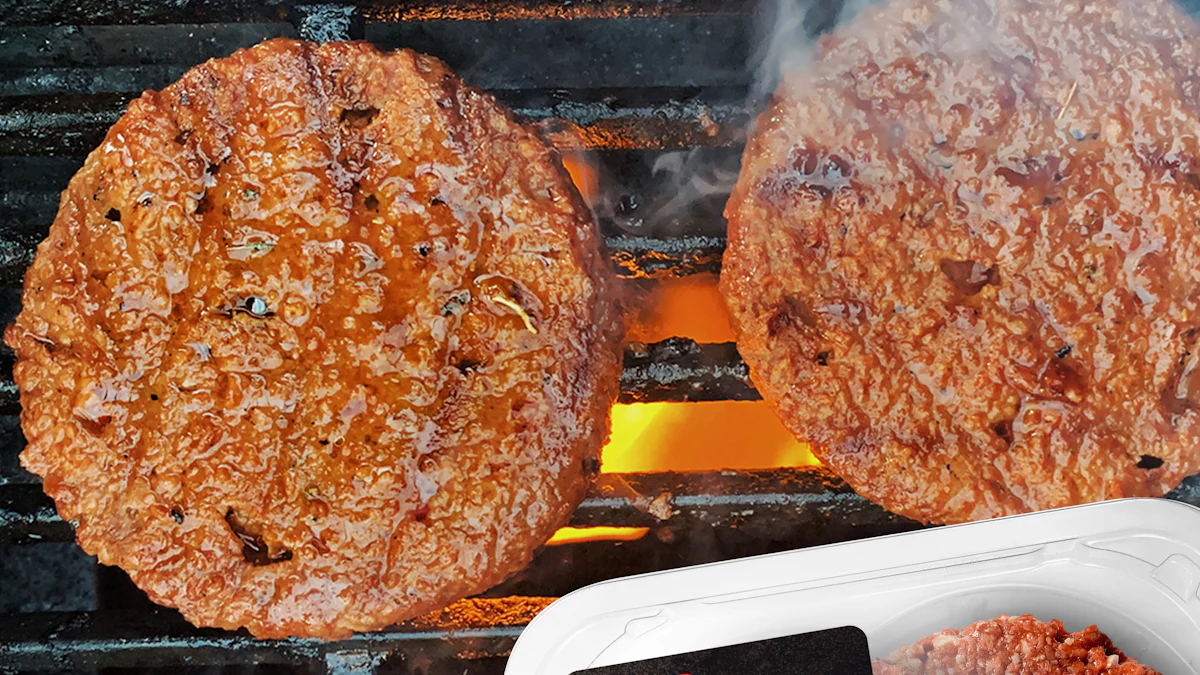Current Trends in Spiral Freezer Market Growth

The spiral freezer market is experiencing a remarkable growth trajectory, driven by the increasing demand for efficient freezing solutions in the food and beverage industry. These freezers, known for their rapid freezing capabilities, have become indispensable in maintaining the quality and texture of products. Technological advancements, particularly in energy efficiency and eco-friendly designs, are further propelling market expansion. As businesses seek cost-effective solutions, the spiral freezer cost becomes a crucial factor, offering a larger return on investment compared to traditional methods.
Key Takeaways
The spiral freezer market is projected to grow significantly, with an expected CAGR of 6.83% from 2024 to 2031, indicating strong demand for efficient freezing solutions.
Technological advancements, particularly in energy efficiency and automation, are transforming the spiral freezer industry, helping businesses reduce costs and improve operational efficiency.
Spiral freezers are essential for maintaining the quality of frozen food products across various sectors, including meat, seafood, and bakery, catering to the rising consumer demand for convenience.
Investing in eco-friendly and energy-efficient spiral freezers not only aligns with sustainability goals but also offers businesses a competitive edge in the market.
Emerging markets present significant growth opportunities for spiral freezers, driven by urbanization and increasing demand for frozen food products.
Companies should focus on product innovation and strategic partnerships to enhance their market presence and meet the evolving needs of the food processing industry.
Market Overview
Current Market Size
Global Market Valuation
The global spiral freezer market has shown impressive growth in recent years. As of 2023, the market was valued at approximately USD 4.96 billion. This valuation reflects the increasing demand for efficient freezing solutions across various sectors, particularly in the food and beverage industry. The market's robust expansion is attributed to technological advancements and the rising need for high-quality frozen food products.
Key Market Segments
The spiral freezer market comprises several key segments, each contributing to its overall growth. These segments include:
Food and Beverage: This segment dominates the market due to the high demand for frozen food products. Spiral freezers are essential in maintaining the quality and texture of these products.
Meat and Poultry: The meat processing industry relies heavily on spiral freezers for rapid freezing, ensuring product safety and quality.
Seafood: The seafood sector benefits from spiral freezers' ability to preserve freshness and extend shelf life.
Bakery Products: Spiral freezers play a crucial role in the bakery industry by maintaining the integrity of baked goods during storage and transportation.
Growth Projections
Expected CAGR
The spiral freezer market is poised for significant growth in the coming years. Analysts project a compound annual growth rate (CAGR) of 6.83% from 2024 to 2031. This growth rate underscores the market's potential and the increasing adoption of spiral freezers across various industries.
Future Market Valuation
By 2031, the spiral freezer market is expected to achieve a valuation of USD 18.43 billion. This projection highlights the market's strong upward trajectory and the continued demand for advanced freezing solutions. The anticipated growth reflects the industry's focus on innovation and the development of energy-efficient and eco-friendly technologies.
Market Drivers and Trends

Technological Advancements
Innovations in Energy Efficiency
Spiral freezers have become pivotal in the food processing industry due to their ability to rapidly freeze products while preserving quality. Recent technological advancements focus on enhancing energy efficiency, which is crucial for reducing operational costs and environmental impact. Manufacturers are investing in research and development to create systems that consume less energy without compromising performance. These innovations not only lower the spiral freezer cost but also align with global sustainability goals, making them attractive to businesses seeking eco-friendly solutions.
Automation and Smart Technology
The integration of automation and smart technology in spiral freezers is transforming the industry. Automated systems streamline operations, reduce human error, and increase throughput. Smart technology enables real-time monitoring and predictive maintenance, ensuring optimal performance and minimizing downtime. These advancements enhance the efficiency of food processing facilities, allowing them to meet the growing demand for frozen products. By adopting these technologies, companies can improve their competitive edge and reduce the spiral freezer cost over time.
Increased Demand in Food and Beverage Industry
Rising Need for Frozen Food
The demand for frozen food continues to rise as consumers seek convenience and longer shelf life. Spiral freezers play a critical role in meeting this demand by providing efficient freezing solutions that maintain product quality. The increasing consumption of frozen goods, driven by changing lifestyles and dietary preferences, fuels the growth of the spiral freezer market. As a result, businesses are expanding their freezing capabilities to cater to this trend, further boosting market expansion.
Expansion of Food Processing Facilities
The expansion of food processing facilities is another significant driver of the spiral freezer market. As the global foodservice industry grows, companies invest in advanced freezing technologies to enhance production capacity and efficiency. Spiral freezers offer a compact and effective solution for large-scale operations, making them a preferred choice for new and existing facilities. This expansion not only increases the demand for spiral freezers but also encourages innovation in freezing technology to meet diverse industry needs.
Key Players and Competitive Landscape
Major Companies
Overview of Leading Manufacturers
Several companies lead the spiral freezer market, each contributing unique innovations and technologies. JBT Corporation stands out with its introduction of the JBT Northfield CleanFREEZETM Spiral Freezer. This product offers a sanitary design and incorporates Clean-in-Place technology, enhancing cleanliness and efficiency. GEA Group is renowned for its energy-efficient freezing solutions, catering to various food industry segments. Mayekawa Mfg. Co., Ltd. provides a diverse range of mechanical and cryogenic spiral freezers, meeting different food processing needs. The Linde Group and Air Products and Chemicals, Inc. focus on cryogenic freezing technologies, ensuring superior product quality.
Market Share Analysis
The market share analysis reveals that these companies dominate due to their innovative approaches and comprehensive product offerings. JBT Corporation and GEA Group hold significant shares, attributed to their advanced automation features and energy-efficient designs. Mayekawa Mfg. Co., Ltd. also captures a substantial portion by offering versatile freezing solutions. The Linde Group and Air Products and Chemicals, Inc. maintain their positions through specialized cryogenic technologies, appealing to sectors requiring stringent quality standards.
Market Strategies
Product Innovation
Product innovation remains a critical strategy for companies in the spiral freezer market. JBT Corporation's CleanFREEZETM Spiral Freezer exemplifies this approach, integrating advanced features that enhance operational efficiency. GEA Group continues to innovate by developing energy-efficient systems that reduce the spiral freezer cost, making them attractive to cost-conscious businesses. These innovations not only improve performance but also align with sustainability goals, appealing to environmentally conscious consumers.
Strategic Partnerships and Acquisitions
Strategic partnerships and acquisitions play a vital role in expanding market presence. Companies like JBT Corporation and GEA Group engage in collaborations to enhance their technological capabilities and broaden their product portfolios. These partnerships facilitate access to new markets and customer bases, driving growth and competitiveness. Acquisitions allow companies to integrate complementary technologies, further reducing the spiral freezer cost and enhancing value propositions for clients.
Market Segmentation and Regional Insights

By Type
Single Drum Spiral Freezers
Single drum spiral freezers offer a compact solution for food processing facilities. They efficiently freeze products with shorter dwell times, making them ideal for operations with limited space. These freezers are particularly beneficial for small to medium-sized enterprises that require rapid freezing capabilities without extensive infrastructure. The design of single drum spiral freezers ensures optimal airflow and temperature distribution, enhancing product quality and consistency.
Double Drum Spiral Freezers
Double drum spiral freezers cater to larger-scale operations, providing increased capacity and longer dwell times. These systems are essential for industries that process high volumes of food products, such as meat and poultry. The dual-drum configuration allows for greater flexibility in processing various product types and sizes. By utilizing double drum spiral freezers, manufacturers can achieve higher throughput and maintain stringent food safety standards.
By Application
Meat and Poultry
In the meat and poultry sector, spiral freezers play a crucial role in preserving product quality and safety. They rapidly freeze meat products, minimizing ice crystal formation and maintaining texture. This capability is vital for meeting regulatory requirements and consumer expectations. The efficiency of spiral freezers in this application reduces the spiral freezer cost by optimizing energy use and minimizing waste.
Seafood
Seafood processing benefits significantly from spiral freezers due to their ability to preserve freshness and extend shelf life. These freezers ensure that seafood products retain their natural flavor and nutritional value. The rapid freezing process prevents the growth of harmful bacteria, ensuring food safety. As a result, spiral freezers are indispensable in maintaining the quality of seafood products from processing to distribution.
Bakery Products
Spiral freezers are essential in the bakery industry for maintaining the integrity of baked goods during storage and transportation. They provide consistent freezing, which is crucial for preserving the texture and taste of bakery products. By using spiral freezers, bakeries can extend the shelf life of their products and reduce spoilage. This application highlights the versatility of spiral freezers in catering to diverse food processing needs.
Regional Analysis
North America
North America leads the spiral freezer market due to the high demand for frozen food products. The region's advanced food processing infrastructure supports the adoption of innovative freezing technologies. Manufacturers in North America focus on energy-efficient solutions to reduce operational costs and meet environmental regulations. The market's growth in this region reflects the increasing consumer preference for convenience foods.
Europe
Europe's spiral freezer market is driven by stringent food safety standards and a strong emphasis on sustainability. The region's food processing industry prioritizes eco-friendly technologies, aligning with global environmental goals. European manufacturers invest in research and development to enhance the efficiency and performance of spiral freezers. This commitment to innovation positions Europe as a key player in the global market.
Asia-Pacific
The Asia-Pacific region experiences rapid growth in the spiral freezer market due to rising disposable incomes and changing dietary preferences. The increasing consumption of frozen foods fuels demand for advanced freezing solutions. Manufacturers in this region focus on expanding production capacities to meet the growing market needs. The adoption of spiral freezers in Asia-Pacific highlights the region's potential for significant market expansion.
Spiral Freezer Cost and Future Outlook
Potential Growth Areas
Emerging Markets
Emerging markets present significant opportunities for the spiral freezer industry. These regions experience rapid industrialization and urbanization, leading to increased demand for frozen food products. Companies can capitalize on this trend by expanding their presence in these markets. They should focus on offering cost-effective solutions that meet local needs. By doing so, they can enhance their market share and drive growth.
Sustainable and Eco-Friendly Solutions
Sustainability has become a key focus in the spiral freezer market. Manufacturers invest in developing eco-friendly solutions to reduce environmental impact. Energy-efficient designs and the use of sustainable materials help lower the spiral freezer cost over time. These innovations align with global sustainability goals and appeal to environmentally conscious consumers. Companies that prioritize sustainability can gain a competitive edge and attract a broader customer base.
Innovations on the Horizon
Advanced Freezing Technologies
The future of the spiral freezer market lies in advanced freezing technologies. Innovations such as cryogenic and mechanical refrigeration methods enhance efficiency and product quality. These technologies enable faster freezing times and better preservation of food texture and flavor. As a result, businesses can reduce the spiral freezer cost by optimizing energy use and minimizing waste. Continued research and development in this area will drive further advancements and market growth.
Integration with IoT and AI
The integration of IoT and AI technologies represents a significant advancement in the spiral freezer industry. IoT-enabled devices allow for real-time monitoring and data analysis, improving operational efficiency. AI algorithms can predict maintenance needs and optimize performance, reducing downtime and costs. By adopting these technologies, companies can enhance their competitive position and offer more value to customers. The spiral freezer cost becomes more manageable as these innovations streamline processes and improve productivity.
The spiral freezer market is experiencing robust growth, driven by increasing demand across various sectors. Key trends include technological advancements and innovations in energy efficiency and automation. These developments cater to the growing environmentally conscious consumer base. The market's expansion is further fueled by rising consumer awareness and supportive government regulations. North America and Europe remain dominant due to their advanced infrastructure, while Asia-Pacific emerges as a significant growth region. The potential for future growth and innovation in the spiral freezer market remains promising, with opportunities in sustainable and eco-friendly solutions.
FAQ
What is a spiral freezer?
A spiral freezer is a highly efficient freezing system designed for rapid cooling of food products. It requires defrosting only once a week, even when handling items with an inlet temperature of 80°C. This efficiency makes it a cost-effective solution for maintaining product quality and texture.
Who uses spiral freezers?
Spiral freezers are widely used in the food and beverage industry. They are essential for sectors such as meat and poultry, seafood, and bakery products. These industries rely on spiral freezers to ensure the rapid freezing of products, preserving their quality and extending shelf life.
How do spiral freezers work?
Spiral freezers operate by moving food products through a spiral conveyor system within a freezing chamber. This design allows for even and rapid cooling, which is crucial for maintaining the integrity of the food. The spiral configuration maximizes space and efficiency, making it ideal for high-volume production.
What are the benefits of using a spiral freezer?
Spiral freezers offer several benefits, including rapid freezing, energy efficiency, and compact design. They help maintain the quality and texture of food products while reducing operational costs. Additionally, their low maintenance requirements make them a preferred choice for many food processing facilities.
How does a spiral freezer contribute to sustainability?
Spiral freezers contribute to sustainability by incorporating energy-efficient technologies and eco-friendly designs. These features reduce energy consumption and environmental impact, aligning with global sustainability goals. Businesses can lower their carbon footprint while maintaining high production standards.
What types of products can be frozen in a spiral freezer?
Spiral freezers can handle a wide range of products, including meat, poultry, seafood, and bakery items. Their versatility makes them suitable for various food processing applications, ensuring that products retain their quality and freshness throughout the freezing process.
Are spiral freezers easy to maintain?
Yes, spiral freezers are designed for low maintenance. They require defrosting only once a week, even when processing high-temperature products. This feature reduces downtime and maintenance costs, making them a reliable choice for continuous production environments.
What technological advancements are present in modern spiral freezers?
Modern spiral freezers incorporate advancements such as automation, smart technology, and energy-efficient systems. These innovations enhance operational efficiency, reduce human error, and optimize energy use. As a result, businesses can achieve higher productivity and lower operational costs.
How do spiral freezers differ from traditional freezers?
Spiral freezers differ from traditional freezers in their design and efficiency. They use a spiral conveyor system for rapid and even cooling, which is more efficient than the static cooling methods of traditional freezers. This design allows for higher throughput and better product quality.
What factors should be considered when choosing a spiral freezer?
When choosing a spiral freezer, consider factors such as capacity, energy efficiency, and maintenance requirements. It's important to select a freezer that meets the specific needs of your production facility and aligns with your sustainability goals. Additionally, consider the reputation and support services of the manufacturer.
See Also
How Spiral Freezers Drive Innovation In Various Industries
Comparing Spiral And Tunnel IQF Freezers For Cost Efficiency
Understanding The Key Differences Between Tunnel And Spiral Freezers

